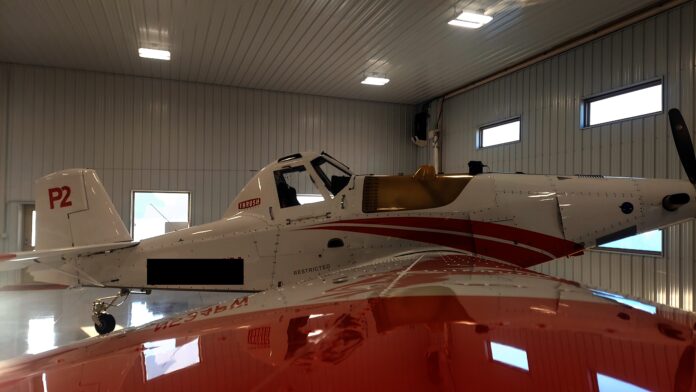Owning an aircraft is an investment that requires proper care and maintenance to retain its value and slow the process of corrosion. Our paint can be subjected to various hazards like UV rays, chemical contaminants, scratches, and defects. We will dive into different types of protection and how you can keep your aircraft looking its best to retain the highest value.
Waxes: Waxing is one of the oldest and most well-known paint protection methods. With many varieties and types available, it can get confusing to know what to use. There are several types of paint waxes available in the market. Here are some of the most common ones:
Carnauba Wax: Carnauba wax is derived from the leaves of the Brazilian palm tree and is great for many applications, often suggested for aircraft like Cirrus, made from carbon fiber or synthetic materials. Another option is beeswax, which offers an eco-friendly alternative to synthetic waxes. They provide good protection and nice shine but may only last briefly as synthetic/Hybrid options. These types of waxes are often great for use with lacquer finishes.
Hybrid Wax: Hybrid waxes combine the benefits of both carnauba wax and synthetic polymer wax. They provide a slightly faster application and easier removal of application while still providing natural gloss and shine. Carnauba and Hybrid waxes are often rated from a few weeks to a month(s) of protection when used with proper, PH-neutral wash soaps. This option comes with a challenge, as many of the chemicals and soaps required in the aerial application industry sprayed daily will remove these waxes within one to two washes. Many labor hours to apply, cure, and remove excessive wax buildup can be time-consuming. With operations of aerial applications being fast-paced, they are long gone before the season even reaches peak operation tempo.
2. Paint Sealants:
Paint sealants offer a longer-lasting solution compared to traditional wax. These sealants are made of synthetic polymers that bond with the paint surface, creating a protective layer with the paint. They provide better UV protection, durability, and resistance to environmental contaminants and chemicals and are rated from one month to nine months. However, most are rated at 6-month protection with proper Ph Neutral wash soaps. We highly suggest this type of protection. Once the aircraft is cleaned, sealant can be sprayed on quickly, wiped with a microfiber towel into the paint, and immediately returned to work. Sealants provide a deeper shine than traditional waxes. This type of protection works well with clear coat and single-stage paint.
3. Ceramic Coatings:
Ceramic coatings provide exceptional durability to chemical and UV while providing increased shine. This nanotechnology creates a molecular bond with the substrate, forming a thin, almost zero-weight layer over the paint that is much stronger than traditional waxes and sealants. Due to ceramic coatings creating a flat layer molecularly over the paint, cleaning is significantly reduced. Decreased surface tension leads to the substrate collecting or holding much less contamination and can last for years rather than weeks. Ceramic coatings come with a drawback as most are required to be installed by professional detailing companies that must attend certification and training classes to access products. The benefit of professional coating installation is that the service will provide time-saving techniques and paint-safe products to reduce labor costs and repainting.
4. Paint Protection Films (PPF):
Paint protection films are a physical barrier applied to the vehicle’s paint, often seen on the leading edges of aircraft and in front of cars/trucks. These films are typically made of clear or black polyurethane, acting as armor against scratches and minor impacts. This film comes with a weight drawback, needing to be installed by professional services.
Conclusion:
Protecting your paint is essential for maintaining its value, appearance, and time. Whether you opt for traditional waxing, advanced sealants, ceramic coatings, or paint protection films, each option offers varying levels of protection and durability. Consider your budget, desired longevity, company size, and best maintenance schedule. Weekly cleaning and maintaining your paint aircraft will ensure that shine remains intact. Remember, a well-protected paint job not only enhances the aesthetic appeal but also contributes to the overall longevity of your aircraft.
Byron Yoder owns Frontline Detail, a veteran-owned aviation detailing, ceramic coating, and industrial corrosion protection company. Byron’s experience is 15 years of detailing with certifications in aircraft detailing, ceramic coating, and corrosion protection. Frontline Detail is based out of North Dakota. Please get in touch with Frontline Detail at 701-739-6550 or email frontlinedetailnd@hotmail.com with any questions about your aircraft detailing needs.





